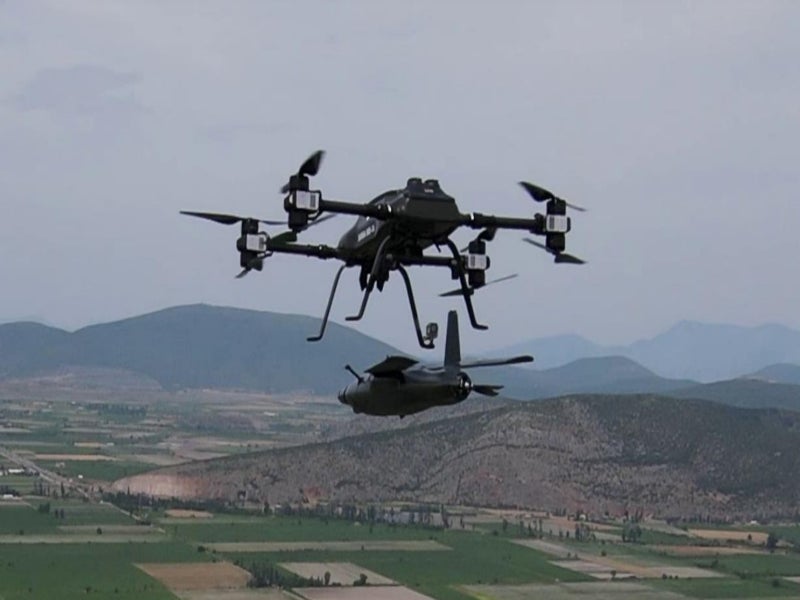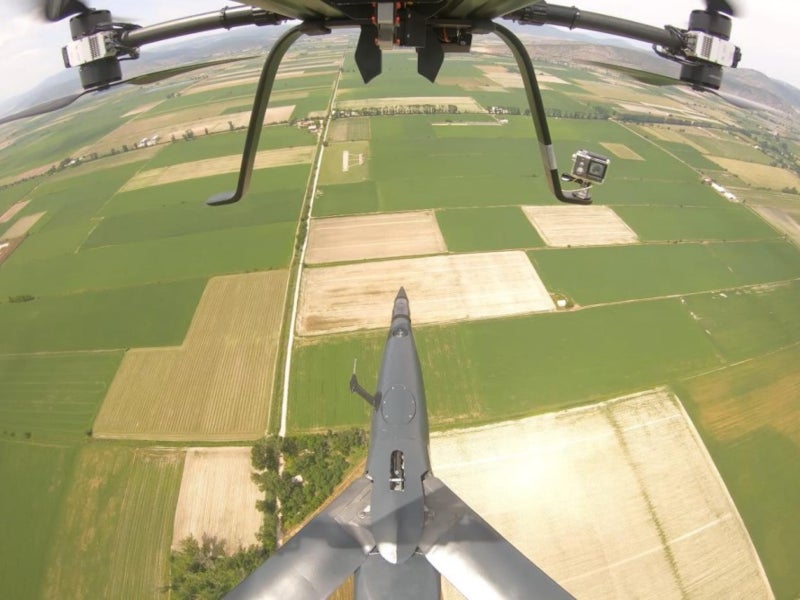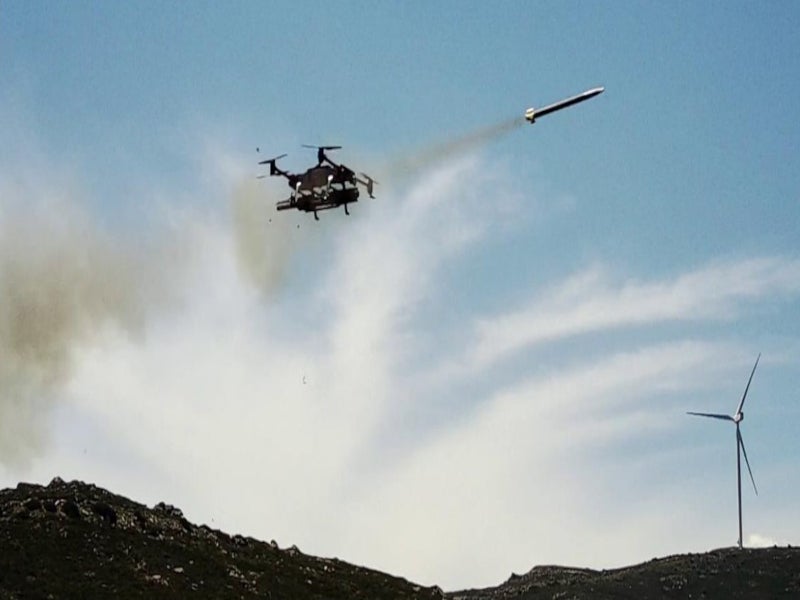SARISA unmanned combat aerial vehicle (UCAV) is part of the SARISA family of versatile aerial platforms developed by Spirit Aeronautical Systems (SAS) Technology, an unmanned systems manufacturer based in Greece. It is designed to offer organic close air support (CAS) to military units.
The SARISA UCAV can be configured with different cargo and weapon systems to suit diverse mission requirements. When equipped with laser-guided rockets, SARISA can be a cost-effective alternative to highly expensive attack helicopters.
SARISA UCAV testing details
SARISA UCAV successfully launched FZ-90, a 2.75in (70mm) folding fins aircraft rocket (FFAR) built by Thales Belgium, in April 2023. The drone became the first of its kind to fire a 70mm rocket.
The firing test was performed by SAS Technology in partnership with Thales Belgium at a firing range of the Hellenic Ministry of Defence’s (MOD) General Directorate for Defence Investments and Armaments (GDDIA).
It was supervised by the GDDIA and supported by Hellenic Defence Systems (HDS), a state-owned defence manufacturing company.
SAS Technology used the SARISA SRS-1A version of the drone to release the AIHMI AHM-1X stand-off loitering munition (SOLM) system loaded with a dummy FZ-90 rocket during a flight test conducted in June 2023.
SARISA versions
SARISA is a small and easily transportable multirotor drone built in two versions: the SARISA SRS-1C cargo version and the SARISA SRS-1A / SRS-1R(X) weaponised version.
The SRS-1A is designed for military applications, whereas the SRS-1C is primarily designed to serve as either a cargo carrier or an aerial spraying or equipment and sensor platform with applications in both civil and military contexts.
Technical specifications of SARISA UCAV
SARISA drone measures 165cm long, 218cm wide and 45cm high, with a maximum take-off weight of 60kg. The drone can provide 20 minutes of continuous flight with a maximum payload capacity of approximately 35kg. The flight time varies depending on the payload and the mission type.
Payload configuration
The flexible platform with interchangeable payload racks allows quick reconfiguration to serve the requirements of different missions.
The swift reconfiguration allows the drone to function as an armed air platform equipped with various weapon systems for tactical air-to-ground attacks or as a tactical cargo carrier.
SARISA can also be utilised for aerial spraying by incorporating a spray tank rack.
SARISA’s tactical configuration details
When equipped with either laser-guided or unguided rockets, SARISA UCAV can offer various operational capabilities to military units, such as defending islands against naval invasion, supporting special forces operations, and serving as an organic system on naval units. It can also reduce local commanders’ dependence on fighter jets and attack helicopters.
The SRS-1A, which is the basic tactical configuration of SARISA, is fitted with a single or dual rocket launcher rack capable of accommodating different rockets, including the 2.75in-diameter HYDRA 70 rocket launchers. The launchers can be equipped with a range of warheads and are extensively utilised by NATO armed forces.
The HYDRA is typically carried by light attack ground vehicles or helicopters such as the AH-64 Apache. The specific configuration enables ground-based units to employ a light vehicle system that can fulfil their CAS mission needs.
Furthermore, the ability to retrofit the drone with different customised racks allows it to carry a range of launched or dropped weapon systems.
The drone can also perform cargo missions involving replenishing essential supplies to army units with minimal reconfiguration.
SARISA SRS-1R drone details
The drone can be converted into an SRS-1R26 configuration with the addition of an in-flight releasable rack that can accommodate up to four RPG-26 launchers, which in turn are integrated with the SFM-26A Servo firing mechanism.
While operating in the air, the SRS-1R26 can engage targets at close to medium distances with high effectiveness and accuracy.






